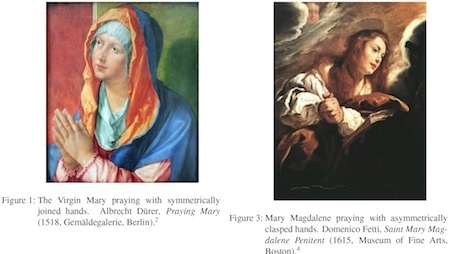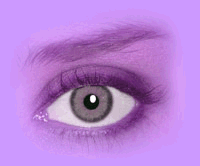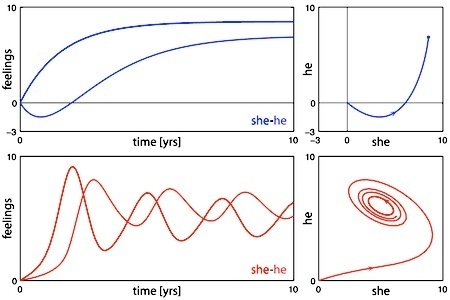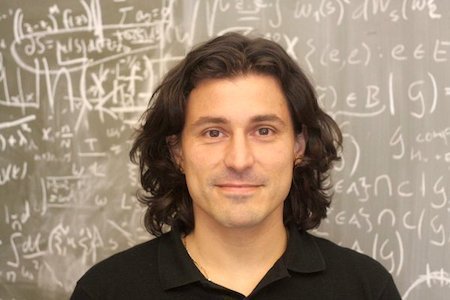Marc Abrahams's Blog, page 387
August 4, 2014
Science, technology, and potato-chip-related sound
Sounds related to potato chips are again inspiring scientific innovation.
THEN: The 2008 Ig Nobel Prize for nutrition was awarded to Massimiliano Zampini of the University of Trento, Italy and Charles Spence of Oxford University, UK, for electronically modifying the sound of a potato chip to make the person chewing the chip believe it to be crisper and fresher than it really is. [Details of their work are in the study "The Role of Auditory Cues in Modulating the Perceived Crispness and Staleness of Potato Chips," Massimiliano Zampini and Charles Spence, Journal of Sensory Studies, vol. 19, October 2004, pp. 347-63.]
NOW: Now a research project at MIT is spurring headlines such as this one from Engadget: ” Visual microphone can pick up speech from a bag of potato chips“. The MIT research team explains their work, in this video:
(Thanks to investigator Louisa Vandross for bringing this to our attention.)

Artificial eyes – a look back
If the history of ocularistry (artificial eye implementation) is of interest to you, may we recommend an article by retired ocularist Clyde W. Andrews, published in the fall 2005 issue of the Journal of Ophthalmic Prosthetics, My Work as an Eyemaker: The First 55 Years :
“
I have passed on my favorite (Windsor Newton) brush to the younger generation. I have found that it is not easy to retire as an ocularist. I still wonder why someone would wear a black patch out in public, and I cringe when I hear a tasteless or insensitive joke about glass eyes. If they only knew the beauty of our unique profession or the pain and isolation our patients sometimes feel. When I reflect on all of these things that have evolved over time it is no wonder that eyemaking will always be with me.“
More information about the fabrication and the art of hand-painting artificial eyes is available here – and there are more historical notes here. (from which the photo above is taken)
August 3, 2014
How to interpret a new discovery
Wolter Seuntjens, in exploring yet another frontier that few have examined, made a discovery. In a newly published study, Seuntjens gives a clear explanation of how to interpret his or anyone’s new discovery about anything. The study is:
“Mary Symmetrical and Mary Nonsymmetrical – A Hitherto Undetected Difference in the Iconography of the Two Most Important Women in the New Testament?” JUnQ, 4, 2, 18–27, 2014. Seuntjens first summarizes his research:
“In the history of Christian art the Virgin Mary and Mary Magdalene are undoubtedly the two most frequently depicted women. Contrary to expectation, the praying postures in which the Virgin Mary and Mary Magdalene are depicted are not random. The Virgin Mary prays most often symmetrically whereas Mary Magdalene prays predominantly nonsymmetrically…

Later comes this instructive passage:
“Assuming that the observed pattern is indeed a new fact, it is difficult if not impossible to see in advance where this new fact will lead. But, if it is a new fact, then its interpretation and its possible connections with other facts and interpretations old and new should be addressed. If, however, the pattern is a fluke, then that is also interesting.”
 Two of Seuntjens’s previous discoveries achieved some eminence:
Two of Seuntjens’s previous discoveries achieved some eminence:
Blushing in the Dark: First Experimental Proof
On Yawning; or, The Hidden Sexuality of the Human Yawn
Seuntjens also investigates blinking and winking. The blinking or winking eye you see here is from his web site.
Seuntjens’s new study appears in the journal JUnQ, the Journal of Unsolved Questions.
August 2, 2014
Mathematicians’ Romantic Yearning for Love and Chaos
Here’s the latest chapter in a possibly endless series of papers by different mathematicians fancifully using the metaphors and mathematics of chaos to tell and re-tell tales of love:
“Love stories can be unpredictable: Jules et Jim in the vortex of life,” Fabio Dercole and Sergio Rinaldi, Chaos: An Interdisciplinary Journal of Nonlinear Science, vol. 24, 023134, 2014. (Thanks to investigator Mason Porter for bringing this to our attention.) The authors are at Politecnico di Milano, Italy. Here is a photo of the top portion of Fabio Dercole. The object behind him is a blackboard.
Decole and Rinaldi write:
“Love stories are dynamic processes that begin, develop, and often stay for a relatively long time in a stationary or fluctuating regime, before possibly fading. Although they are, undoubtedly, the most important dynamic process in our life, they have only recently been cast in the formal frame of dynamical systems theory…. [We] conjecture that sentimental chaos can have a relevant endogenous origin. To support this intriguing conjecture, we mimic a real and well-documented love story with a mathematical model in which the environment is kept constant, and show that the model is chaotic. The case we analyze is the triangle described in Jules et Jim, an autobiographic novel by Henri-Pierre Roche that became famous worldwide after the success of the homonymous film directed by Francois Truffaut.
“[This figure shows a] graphical representation of two hypothetical love stories. (Left) Feelings’ time series. (Right) Trajectories in the plane of the feelings.”

Here’s a snippet from the film Jules et Jim. We leave it as an exercise for the reader (i.e., you) to analyze the chaotic dynamics on view:
August 1, 2014
Hair and Moustaches in the Far West (1873 to 1899)
 Improbable can find only one academic paper which examines men’s head and facial hair styles in the far western United States between 1873 to 1899. It’s the work of Elaine Pedersen, who is an Associate Professor at the School of Design & Human Environment of Oregon State University.
Improbable can find only one academic paper which examines men’s head and facial hair styles in the far western United States between 1873 to 1899. It’s the work of Elaine Pedersen, who is an Associate Professor at the School of Design & Human Environment of Oregon State University.
See: Men’s Head and Facial Hair in the Far West: 1873 to 1899 (Clothing and Textiles Research Journal, September 2001 vol. 19 no. 4, pp. 158-170)
A examination of 475 photos of politicians in Nevada (1873 to 1899) showed (amongst other things) that 45% had a moustache only, 21.9% had a beard and moustache, 8.4% had no facial hair, and 0% had sideburns only*.
“Primary and secondary sources were analyzed to investigate factors that may have influenced the hair styles, including the question of individual or group behavior. Findings were not consistent with the literature. Differences were discerned in facial and head hair styles among the decades. During the decade known for nonconformity greater variation was found, particularly among facial hair styles. Whereas personal independence appears to have influenced hair style choices somewhat, political independence did not.“
* Note: If any readers have (photographic) evidence of a ‘sideburns only’ hairstyle, please let us know.
Whether to go naked if you’re going to be shot: It depends
The question of whether one is better off being naked or clothed when being shot is not so simple as it may appear.
A 2013 study suggests that if one is going to be shot with a bullet, one might be better off naked. Another study, however, suggests that if one is going to be shot with shotgun pellets, one might be better off wearing clothing. The study is:
“The effect of intermediate clothing targets on shotgun ballistics,” Kenneth Cail and Edward Klatt [pictured here], American Journal of Forensic Medicine and Pathology, 2013 Dec;34(4):348-51. (Thanks to investigator Ivan Oransky for bringing this to our attention.) The authors, at Mercer University School of Medicine, Savannah, Georgia, report:
“The ballistic properties of shotgun shells are complex because of multiple projectiles fired simultaneously that interact and spread out to affect their energy relayed to a human target. Intermediate targets such as clothing can affect penetration into tissues. We studied the effect of common clothing fabrics as intermediate targets on penetration of shotgun shell pellets, using ordnance gelatin to simulate soft tissue and thin cowhide to simulate skin. A standard 12-gauge shotgun with modified choke was used with no. 8 shot ammunition. We found that protection afforded by fabrics to reduce penetration of shotgun pellets into tissues was greater at increasing distance from the muzzle beyond 40 yd (36.6 m). The thicker denim and cotton fabrics provided slightly greater protection than polyester.”
BONUS (related): The 2009 Ig Nobel Peace Prize was awarded to Stephan Bolliger, Steffen Ross, Lars Oesterhelweg, Michael Thali and Beat Kneubuehl of the University of Bern, Switzerland, for determining — by experiment — whether it is better to be smashed over the head with a full bottle of beer or with an empty bottle. REFERENCE: “Are Full or Empty Beer Bottles Sturdier and Does Their Fracture-Threshold Suffice to Break the Human Skull?” Stephan A. Bolliger, Steffen Ross, Lars Oesterhelweg, Michael J. Thali and Beat P. Kneubuehl, Journal of Forensic and Legal Medicine, vol. 16, no. 3, April 2009, pp. 138-42.]
Ig Nobel winner Chabris: “Why Psychologists’ Food Fight Matters”
Ig Nobel Prize winner Chris Chabris and colleague Michelle N. Mayer wrote an essay, in Slate, called “Why Psychologists’ Food Fight Matters“. It begins:
Psychologists are up in arms over, of all things, the editorial process that led to the recent publication of a special issue of the journal Social Psychology. This may seem like a classic case of ivory tower navel gazing, but its impact extends far beyond academia. The issue attempts to replicate 27 “important findings in social psychology.” Replication—repeating an experiment as closely as possible to see whether you get the same results—is a cornerstone of the scientific method. Replication of experiments is vital not only because it can detect the rare cases of outright fraud, but also because it guards against uncritical acceptance of findings that were actually inadvertent false positives, helps researchers refine experimental techniques, and affirms the existence of new facts that scientific theories must be able to explain….
Chabris, together with Dan Simons, was awarded the 2004 Ig Nobel Prize for psychology, for demonstrating that when people pay close attention to something, it’s all too easy to overlook anything else — even a woman in a gorilla suit. [They documented that experiment, in the study "Gorillas in Our Midst," Daniel J. Simons and Christopher F. Chabris, vol. 28, Perception, 1999, pages 1059-74.]
July 31, 2014
When a neuroscientist uses the term “firing”…
What does a neuroscientist mean when he or she uses the term “firing?”
In October 2013 Peter N Steinmetz, director of the Barrow Neurological Institute in Phoenix, Arizona, published this study:
“Testing for effects of different stimuli on neuronal firing relative to background activity,” Peter N Steinmetz and Chris Thorp, Journal of Neural Engineering, vol. 10, no. 5, October 2013.
In July, 2014, Steinmetz was arrested after he carried an AR-15 rifle into the Phoenix airport, according to this and other news reports:
A man who works as a director at the prestigious Barrow Neurological Institute in Phoenix was arrested Friday after he carried a rifle into Sky Harbor International Airport, Phoenix police said…. When confronted, Steinmetz said that he went to the airport only to buy a cup of coffee and had no other business there, police said. Steinmetz is director of the neuroengineering program at the Barrow Neurological Institute at St. Joseph’s Hospital and Medical Center in Phoenix, according to Barrow’s website.
It is not immediately apparent, to most observers, how those two facts are connected.
Some or many references to Steinmetz turn up if you search the Barrow Institute’s web site, but his name no longer appears on many (or maybe all) of the pages those references refer to.
It is unclear whether the Barrow Institute is firing Steinmetz.
BONUS (probably unrelated): “Regular coffee: A magic bullet or a naked gun? Regular coffee but not espresso drinking is protective against fibrosis in NAFLD,” Guglielmo M. Trovato, G. Fabio Martines, Francesca M. Trovato, and Daniela Catalano, Journal of Hepatology, vol. 58, no. 6 (2013): 1264-1265.
Should you lose sleep over losing sleep over the economy?
Three economists issued a wake-up call of some sort about the economy and sleep. The economists say that people who say they lose sleep over the economy are — in the aggregate, statistically speaking, based on some data and cogitation —wrong.
Marina Antillon of Yale, Diane S. Lauderdale of the University of Chicago, and John Mullahy of the University of Wisconsin explain themselves in a new study called “Sleep behavior and unemployment conditions” [published in the journal Economics & Human Biology, vol. 14, July 2014, pp. 22–32]….
—so begins another Improbable Innovation nugget, which appears in its entirety on BetaBoston.
Rodrigo F. Fuck: The physical meaning of TOE tensors
Rodrigo F. Fuck made a small stir in the geophysics community, as did Ilya Tsvankin, with publication of this study:
“Analysis of the symmetry of a stressed medium using nonlinear elasticity,” Rodrigo Felício Fuck and Ilya Tsvankin, Geophysics, vol. 74, no. 5, 2009, pp. WB79-WB87. The authors write:
“Velocity variations caused by subsurface stress changes play an important role in monitoring compacting reservoirs and in several other applications of seismic methods. A general way to describe stress- or strain-induced velocity fields is by employing the theory of nonlinear elasticity, which operates with third-order elastic (TOE) tensors. These sixth-rank strain-sensitivity tensors, however, are difficult to manipulate because of the large number of terms involved in the algebraic operations.”
The second section of the paper is headlined “PHYSICAL MEANING OF TOE TENSORS”:
BONUS: On tensors of elasticity
BONUS (unrelated): Third order
Marc Abrahams's Blog
- Marc Abrahams's profile
- 14 followers




